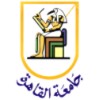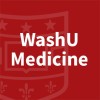
Patient-tailored Transcranial Direct Current Stimulation to Improve Stroke Rehabilitation
Ischemic StrokeUpper Extremity HemiparesisIn a double-blinded sham-controlled study the effect of patient-tailored transcranial direct current stimulation during rehabilitation training will be examined.

Determine the Effect of Targeted High-definition Transcranial Direct Current Stimulation (tDCS)...
StrokeSignificant motor impairments occur in 80% of individuals after moderate to severe stroke and impact the body side to the lesioned hemisphere. Typical motor impairments involve loss of dexterity with highly prevalent upper limb flexion synergy. Advances in treating flexion synergy impairments have been hampered by a lack of precision rehabilitation. Previous studies suggest and support the role of cortico-reticulospinal tract (CRST) hyperexcitability in post-stroke flexion synergy. CRST hyperexcitability is often caused by damage to the corticospinal tract (CST). We hypothesize that: 1) inhibiting the contralesional dorsal premotor cortex (cPMd) will directly reduce the CRST hyperexcitability and thus, reduce the expression of the flexion synergy; 2) facilitating the ipsilesional primary motor cortex (iM1) will improve the excitability of the damaged CST, therefore reducing the CRST hyperexcitability and the flexion synergy. we propose to use a novel targeted high-definition tDCS (THD-tDCS) to specifically modulate the targeted cortical regions for testing his hypothesis, via the following aims: Aim 1. Evaluate the effect of cathodal THD-tDCS over the cPMd on reducing the CRST hyperexcitability and the expression of flexion synergy. Aim 2. Evaluate the effect of anodal THD-tDCS over the iM1 on improving the excitability of the CST, and determine whether this, thus, also reduces the CRST hyperexcitability and the flexion synergy. Aim 3. Evaluate the confluence effect of bilateral THD-tDCS, i.e., simultaneous cathodal stimulation over the cPMd and anodal over the iM1.

Robotic Constraint Lokomat Training for Gait Rehabilitation in Patients With Stroke
PHYSICAL THERAPY TECHNIQUESThe aim of this study is to investigate the effect of a lokomat training on gait performance in Saudi females with stroke. Design: A-Single blind randomized controlled trial. Methods: 28 females patients with stroke will be enrolled in this thesis (6-12 months after stroke); the patients will be randomly assigned into two equal groups of 14. Robotic-assisted gait training group (RG) will receive Lokomat gait training and conventional physiotherapy, while the other group is a control group (CG) will receive conventional physiotherapy. Duration of treatment will be 3 months. The lower limb joint range of motion, Balance, activities of daily living, walk speed, muscle tone of the lower limbs will be recorded before and after treatment and will compared between both groups.

Robotic Hand on Hand Functions in Strokes
CVA (Cerebrovascular Accident)robotic glove training could be a useful aid for these patients. The aim of this study was to investigate the effect of Robotic gloves versus mirror therapy on Hand function in patients with cerebral vascular accident .

Comparison of Innovative Rehabilitation Treatments and Examination of Their Effectiveness in Stroke...
StrokeWe perform a comparison of several groups. We would like to determine how robotic and virtual therapy is most effective in the treatment of stroke patients. We place great emphasis on walking speed, quality of life, coordination and changes in walking distance.

Multi-arm Optimization of Stroke Thrombolysis
Acute Ischemic StrokeThe primary efficacy objective of the MOST trial is to determine if argatroban (100µg/kg bolus followed by 3µg/kg per minute for 12 hours) or eptifibatide (135µg/kg bolus followed by 0.75µg/kg/min infusion for two hours) results in improved 90-day modified Rankin scores (mRS) as compared with placebo in acute ischemic stroke (AIS) patients treated with standard of care thrombolysis (0.9mg/kg IV rt-PA or 0.25mg/kg IV tenecteplase or TNK) within three hours of symptom onset. Patients may also receive endovascular thrombectomy (ET) per usual care. Time of onset is defined as the last time the patient was last known to be well.

EMG-controlled Virtual Reality to Improve Upper Extremity Function in Chronic Stroke Patients
StrokeUpper Extremity DysfunctionThis is a single subject design study to investigate the effectiveness of electromyography-controlled virtual reality and serious gaming treatment on upper extremity functionality in patients in the chronic recovery stage after stroke. The treatment consists of 18 sessions, 3 times per week, 2 hours each session. The investigator's hypothesis is that this treatment will improve upper limb functionality in our study population, this outcome will be measured with Fugl-Meyer Upper-Extremity (FMA-UE) and Action Research Arm Test (ARAT) tests and Kinematic analysis. In addition, we expect to see an increase in the strength of the affected limb and an increase in the embodiment of the upper limb trained.

Powered Orthotic Exoskeleton Training in Stroke
StrokeVeterans who suffer strokes often have disturbances in the ability to walk that reduces independence and quality of life. Alterations in gait combined with general decreased activity are associated with reduced muscle strength of the paretic leg. This leads to cardiovascular deconditioning and reduced quality of life. There is a new and novel battery powered device (Keeogo powered orthotic exoskeleton) that uses motors that assist knee movement while walking, sitting down, and standing up. The Keeogo monitors hip movement to assist the knee, making it simple to learn how to use. If successful, this project will show how this device will help improve the ability to walk and provide evidence to support larger clinical trials in a home and community setting to improve mobility, increase muscle mass and strength in the legs, as well as improve general health and quality of life. Lastly, this device could be used to increase motivation and confidence in a person to walk for longer periods of time and distance, providing the ability to walk in places that were previously inaccessible.

Phone-based Intervention Under Nurse Guidance After Stroke 2
Blood PressureStroke1 moreThe overall objective of Phone-based Intervention under Nurse Guidance after Stroke II (PINGS-2) is to deploy a hybrid study design to firstly, demonstrate the efficacy of a theoretical-model-based, mHealth technology-centered, nurse-led, multi-level integrated approach to substantially improve longer term BP control among 500 recent stroke patients encountered at 10 hospitals in Ghana. Secondly, PINGS II seeks to develop an implementation strategy for routine integration and policy adoption of mhealth for post-stroke BP control in a LMIC setting. The investigators will leverage experience gained from the NIH Global Brain Disorders funded R21 pilot study (NS094033) to test efficacy of a refined, culturally-tailored, and potentially implementable intervention aimed at addressing the premier modifiable risk for stroke & other key variables in an under-resourced system burdened by suboptimal care & outcomes.

Transcranial Magnetic Stimulation and Mental Representation Techniques for the Treatment of Stroke...
StrokeAn immersive multimodal BCI-VR training and bilateral rTMS protocols are likely to complement their effects achieving a stronger neuroplasticity enhancement in stroke patients. Both have been used separately for the treatment of motor sequelae in the upper limbs after stroke. The main objective of this study is to carry out a double-blind, randomized, controlled trial aiming to study the clinical effect of Neurow system (NeuroRehabLab, Lisbon, Portugal) over bilateral rTMS plus conventional rehabilitation in upper limb motor sequelae after subacute stroke (3 to 12 months). We will look for changes in 1. Isometric strength in upper limb, 2. Functional motor scales of upper limb, 3. Hand dexterity 4. Cortical excitability changes. The investigators in the present project hypothesize that both neuromodulation techniques combined will be superior to the use of rTMS alone as adjuvant therapy to conventional rehabilitation.
